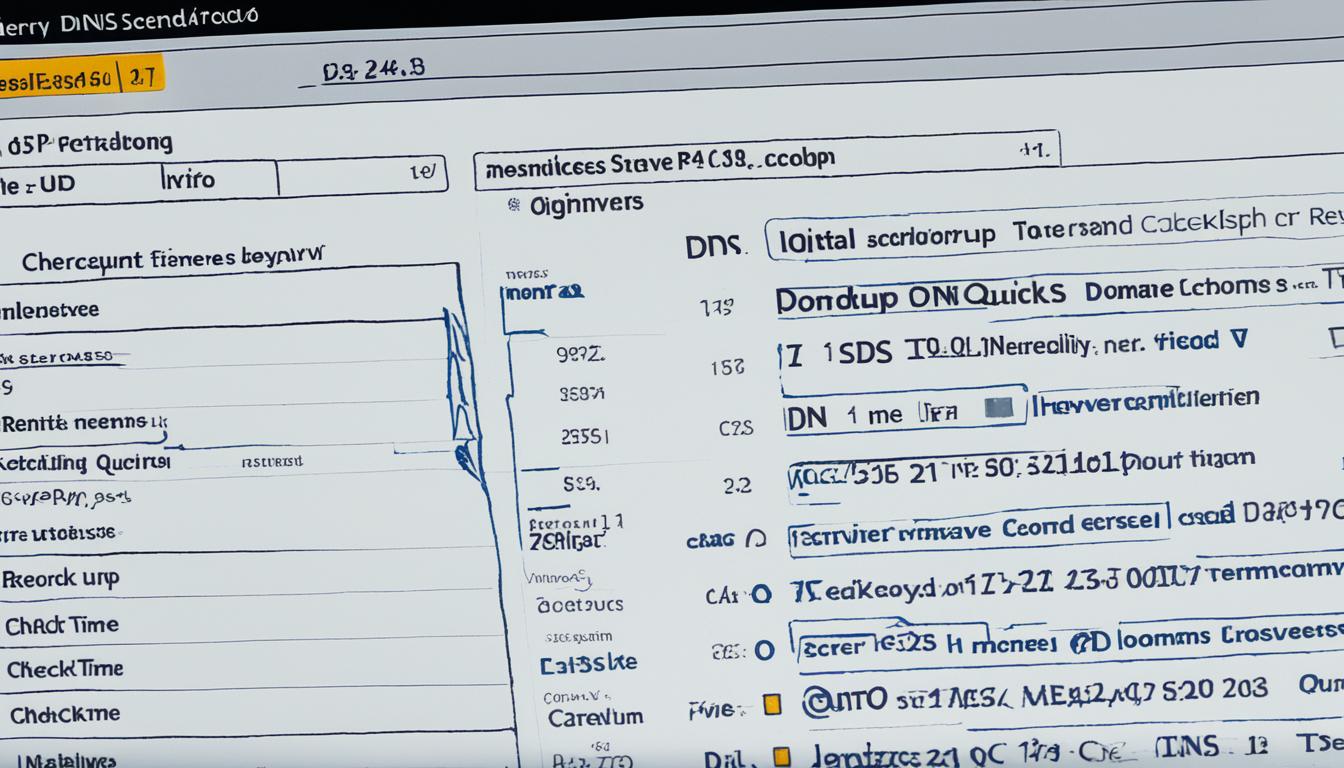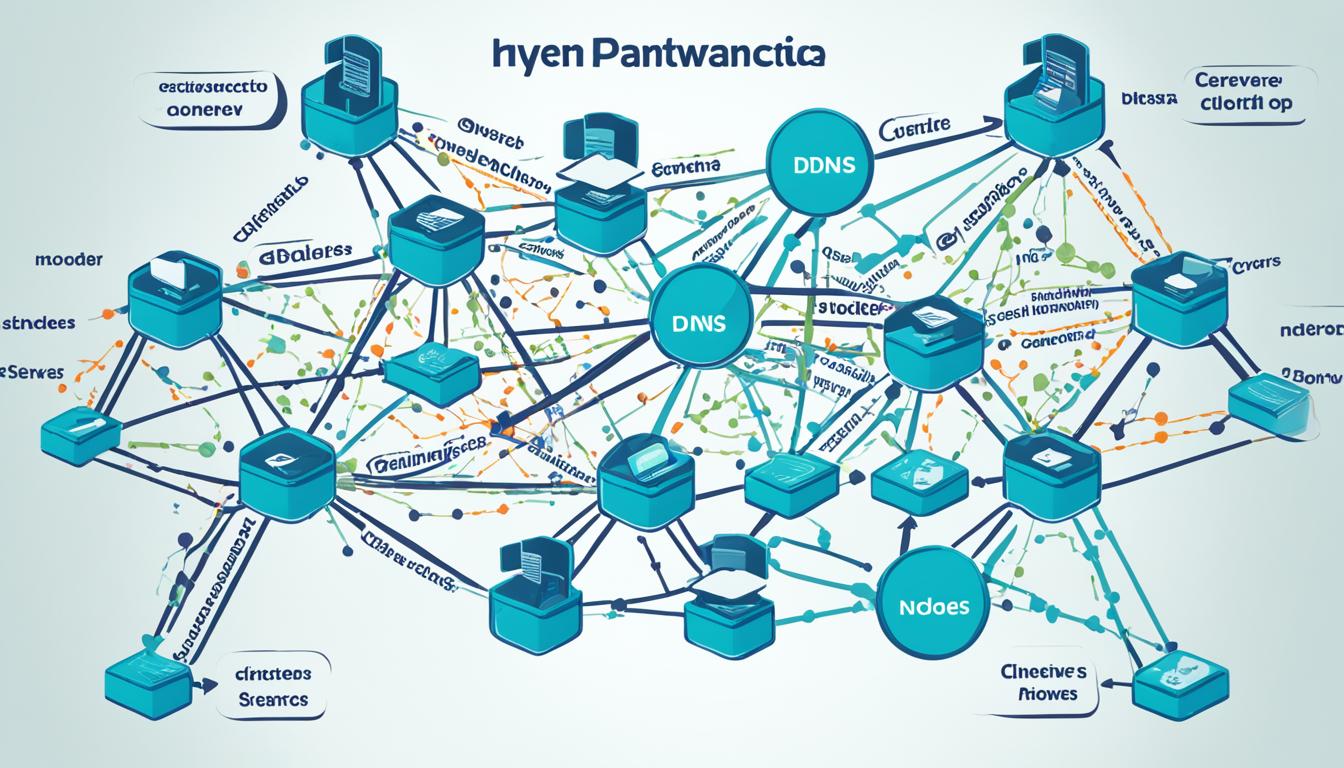What is DNS and how does it work?
Did you know that every time you visit a website, your device communicates with multiple servers to convert the domain name you entered into the corresponding IP address? This seamless process is made possible by the Domain Name System (DNS), a vital component of internet infrastructure.
DNS serves as a virtual phonebook for the internet, eliminating the need for you to remember and input complex IP addresses. Instead, you can simply enter a domain name like Fortinet.com, and DNS takes care of translating it into the correct IP address.
But how does DNS actually work? Let’s dive deeper into its mechanics and demystify its role in connecting users to websites.
Key Takeaways:
- The Domain Name System (DNS) converts domain names into IP addresses.
- DNS servers act as a phonebook for the internet, allowing users to enter domain names instead of IP addresses.
- By translating human-readable domain names, DNS connects users to websites by providing the corresponding IP addresses.
How does DNS work?
DNS works by using a series of servers to complete a DNS lookup and find the correct IP address for a given domain name. Let’s take a closer look at the process:
- DNS Recursor: The DNS recursor, also known as a resolver, receives the DNS query from the client device. It acts as an intermediary and communicates with other servers to find the IP address associated with the requested domain name.
- Root Nameservers: The DNS recursor contacts the root nameservers to obtain a list of authoritative nameservers for the specified top-level domain (TLD).
- TLD Nameservers: The TLD nameservers provide the DNS recursor with the IP addresses of the authoritative nameservers responsible for the requested domain.
- Authoritative Nameservers: The DNS recursor then contacts the authoritative nameservers to obtain the final answer to the DNS query. The authoritative nameservers hold the original copies of DNS records and provide the IP address associated with the requested domain name.
Throughout this process, DNS servers store DNS records, which contain important information such as the IP addresses associated with domain names. This allows for efficient and accurate DNS resolution, ensuring users are connected to the correct websites.
Understanding how DNS works is essential for troubleshooting network connectivity issues and optimizing internet performance. In the next section, we’ll delve deeper into the concept of DNS servers.
What is a DNS server?
A DNS server is a computer with a database that contains the public IP addresses associated with the names of websites. It acts as a phonebook for the internet, matching domain names with their corresponding IP addresses. DNS servers play a vital role in the functioning of the internet by facilitating the translation of human-readable domain names into numerical IP addresses that computers understand.
There are different types of DNS servers, including authoritative nameservers and recursive DNS servers. Authoritative nameservers hold the original copies of DNS zone records and provide the real answers to DNS queries. On the other hand, recursive DNS servers, also known as resolvers, act as intermediaries between clients and authoritative servers. They retrieve the IP address information from authoritative nameservers and deliver the results to the clients.
By navigating the complex web of DNS servers, DNS queries are resolved, enabling users to access websites by simply entering domain names into their web browsers.

Is DNS secure?
While DNS plays a crucial role in connecting users to websites, it is not immune to attacks from cybercriminals. DNS attacks have been on the rise, posing significant risks to organizations and individuals. Attack techniques such as DNS amplification, DNS spoofing, DNS tunneling, and DNS hijacking target vulnerabilities in the system.
To address these security concerns, measures have been implemented to enhance DNS security. One such measure is DNSSec (Domain Name System Security Extensions), which aims to establish a chain of trust and prevent DNS hijacking. DNSSec digitally signs DNS requests at each level of the lookup, ensuring the integrity of the request.
Another security measure is DNS over HTTPS (DoH). DoH encrypts DNS requests, providing an additional layer of protection against DNS-based cyberattacks. By encrypting DNS traffic, DoH safeguards user privacy and helps prevent eavesdropping and tampering.
However, the adoption of DoH has been relatively slow, primarily due to concerns about privacy implications and challenges in implementing parental control settings. Nonetheless, DNS security remains a critical focus area, with ongoing efforts to strengthen the overall security framework.

| DNS Attack Types | Description |
|---|---|
| DNS Amplification | Exploits DNS servers to generate large volumes of traffic, overwhelming the targeted server or network. |
| DNS Spoofing | Redirects DNS queries to malicious servers, leading users to fraudulent websites or intercepting their communications. |
| DNS Tunneling | Encapsulates unauthorized network traffic within DNS queries and responses, enabling data exfiltration or bypassing security measures. |
| DNS Hijacking | Manipulates DNS records or redirects traffic to unauthorized servers, enabling attackers to control or intercept communications. |
How to find my DNS server?
When you connect to the internet, your device automatically uses the DNS server assigned by your internet service provider (ISP). However, if you want to check the primary DNS server used by your device, you can do so through web utilities or network settings.
Some users may prefer to use a public DNS server instead of their ISP’s DNS for various reasons, such as performance improvements or privacy concerns. One popular public DNS server is Google’s DNS server with the IP address 8.8.8.8.
It’s important to note that changing your DNS server can have an impact on your internet browsing experience, so it should be done with caution. Consider consulting with a knowledgeable professional or researching the potential effects before making any changes.
FAQ
What is DNS and how does it work?
How does DNS work?
What is a DNS server?
Is DNS secure?
How do I find my DNS server?
- Shop for Server & Workstation Systems & more - February 25, 2025
- IP Geolocation API and IP Location Lookup Tools - February 24, 2025
- What is GoDaddy? Everything You Need to Know in 2024 - February 23, 2025





















Post Comment
You must be logged in to post a comment.